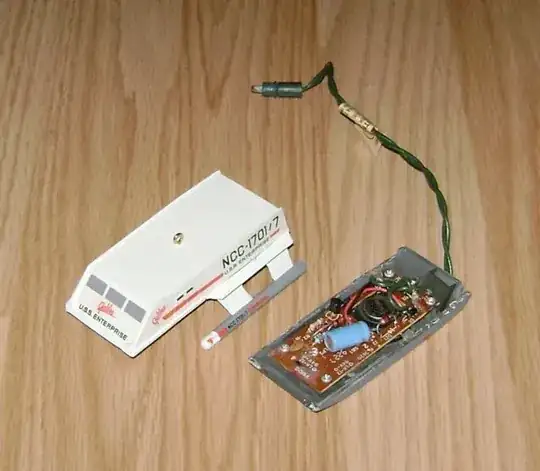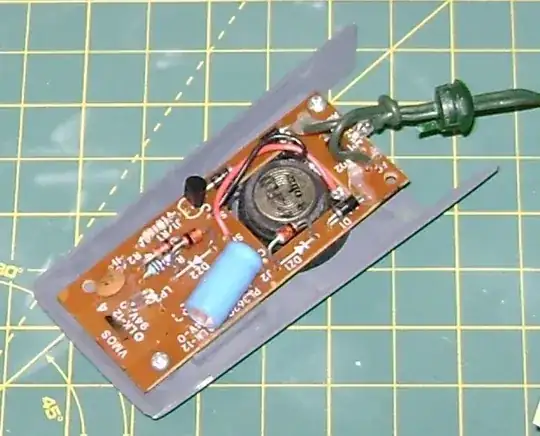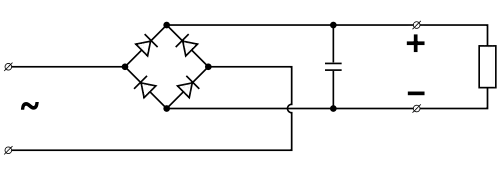This is less of an answer than it is helpful information. Newer versions of these have long since moved to battery power and don't stay lit.
Small AC Incandescent Christmas Light Bulb strings are typically 100 bulbs, set up as two sets of 50 in-series bulb strings in parallel. (The C6 bulbs are 15v and C7/C9 bulbs are typically 120v and all wired in parallel)
With a typical 120v line, that means each bulb in a 50 bulb set is 120 / 50 = 2.4v AC, but there is variations where there are more or less bulbs in each set.
I was only able to find these two pictures of the inside, which makes it very hard to figure out the circuit, but it helps. Notice the connector is just two wires.


Some of the parts are obvious. There seems to be a shunt, a miniature light bulb between where the two wires go on the pcb. This could be a shunt incase the AC bridge fails, or it could be the bulb that lights up the whole ornament. Or both. The bulb is probably in parallel with the AC bridge.
A Typical 4 diode Full Wave AC Diode Bridge/Rectifier. A Large capacitor. Most likely a standard rectifier circuit:

The transistor is most likely a simple amplifier for the speaker. There seems to be two more diodes, some setting resistors, and my best bet there is just a COB (Chip on board/blob) underneath, as these would likely pre-date widespread smd parts usage.
Without a good picture of the bottom, it's hard to confirm any of this, but it's a start. Additionally, I am not sure how a diode bridge in series would affect a reduced AC voltage line (I stay away from AC circuits). But this should be 2.5v DC after the rectifier circuit with the Large cap to smooth out the dc waveform. Plenty of voltage for any typical sound card circuit.
If you could take the existing one apart and take pictures, that would help us help you alot. But it seems these are held together by glue, so that would mean sacrificing it.
This page is where I found the pictures. The last update on their modding project was recent (August), so if you ask there if he could take a good picture or three of the bottom of the board, maybe they would help out.


